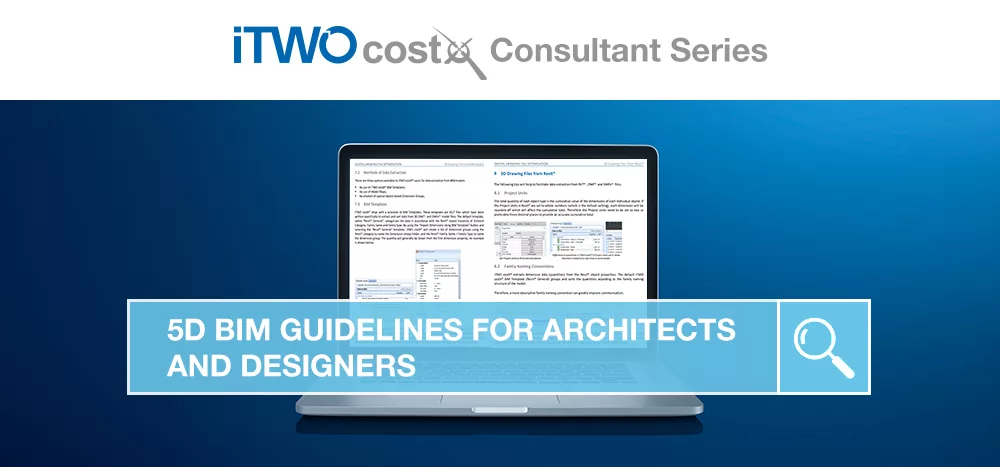24 mins read
From 3D BIM to 5D BIM

Digital technologies are transforming the way we work and reshaping our industries, and the Engineering and Construction (E&C) industry is no exception, albeit somewhat slower than other industries but certainly faster than before. The implementation of Building Information Modeling (BIM) in the design process is the first step many construction firms take towards digitalization.
For project owners, they can gain better visualization of the project design and engage more effectively with all stakeholders. For contractors, the embedding of BIM design into their processes means reducing costly rework, improving quality, and delivering projects on time and within budget.
Although the benefits of BIM in the design phase can be momentous, it is not the be-all end-all of digital innovation. Digitalizing only the design phase is not enough. Going digital means digitalizing everything that could be improved or optimized. With MTWO Complete Construction Cloud, design is seamlessly integrated within the whole construction and operation process, connecting the entire project lifecycle.
Virtual into Physical, BIM becomes BIM 5D
How do we communicate when managing and handling large and complex projects, what is being built and how it is being built? The answers can be found precisely when virtually building the project lifecycle using 5D BIM simulation. When the 3D design of a building project is integrated with “time factor” (4D) and “cost factor” (5D), it is much easier for project stakeholders to comprehend what is being built, how, when, by who, and with what, as well as providing rapid feedback.
- 3D model: A classic 3D geometric model enriched with extra data (quantities, furnishings, materials, devices, personnel deployment).
- 4D: The time factor. The 4D model integrates work stages and their duration so that a model-based schedule and process plan can be created.
- 5D: Cost integration. Cost assignment in the 5D model allows integral, model-based cost planning, tendering, and execution.
As a key step in the preconstruction and planning phase, MTWO 5D simulation creates a lifelike building process for all involved in planning, execution, and operation, enabling stakeholders to explore multiple alternatives, promptly compare and test complex scenarios, and predict the consequences of selecting an alternative across such factors as costing and scheduling, helping builders make the most informed decisions.
The sequence of construction activities is simulated to allocate resources optimally and avoid time and space conflicts before the actual construction begins. Multiple model-based cost scenarios are explored to ensure that the design being considered is within the budget, and with a holistic view of the project, optimizing design and maximizing the value of the project becomes much easier.
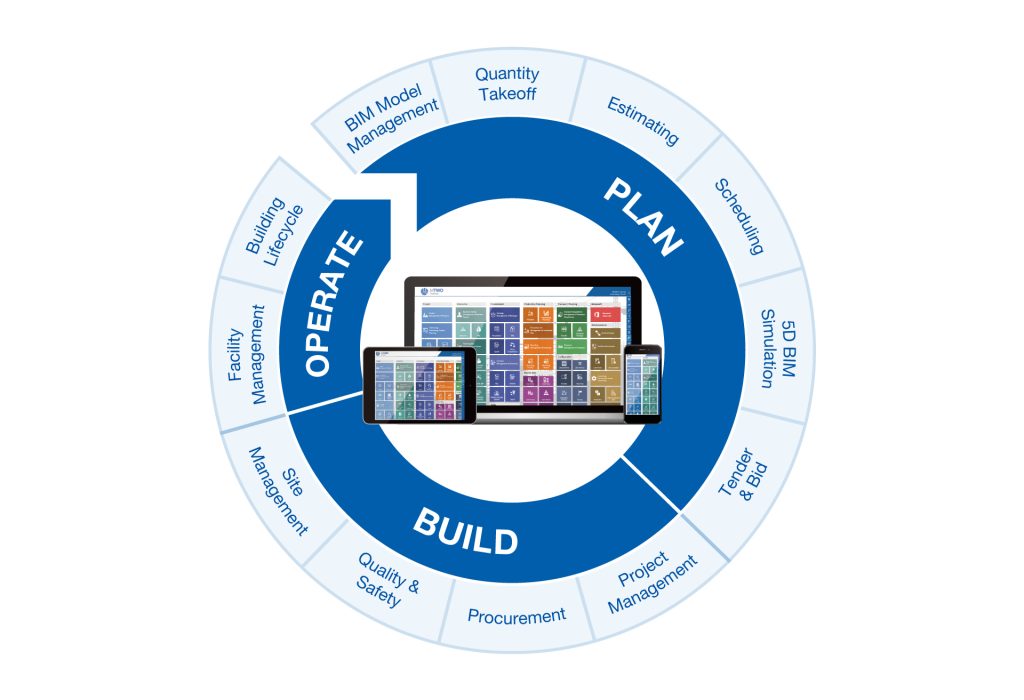
Bringing 3D BIM to 5D BIM
With the smart plugin – iTWO 3D – linking up Revit and MTWO, models can be real-time synchronized between Revit and MTWO to eliminate back and forth rework. iTWO 3D provides over 40 powerful features, including:
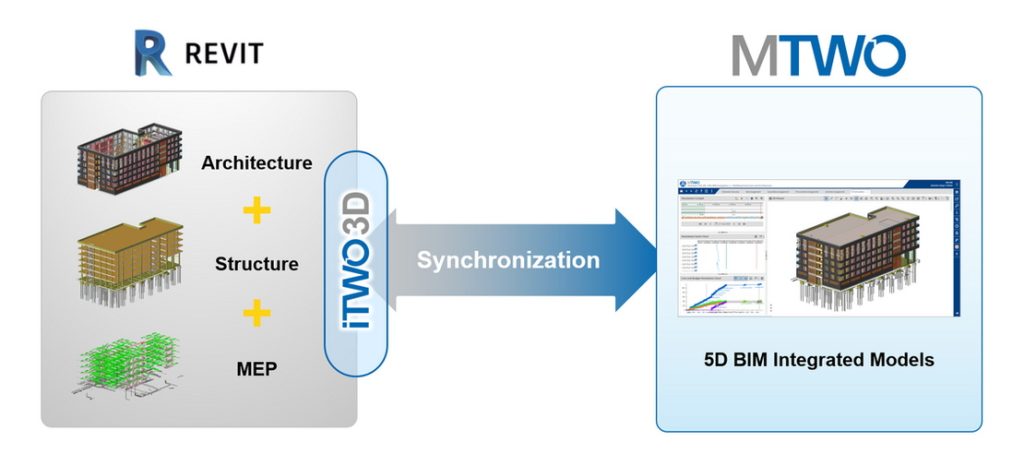
- MTWO data synchronization and MTWO integration
- Synchronize BIM model between Revit and MTWO, greatly improving efficiency by eliminating the model exporting and importing process.
- Integrate MTWO Cloud Data to Revit model to make 5D BIM modeling easier and faster.
- Fast model operation
- Model navigation: Navigate BIM model through a series of commonly used standard views.
- Model editing: Batch editing BIM models in one click with smart templates.
- Model check and analysis: Check model quality automatically and enforce enterprise standards to ensure the downstream cost and schedule services quality.
- Others
- QTO: Fetch level-based rebar/cable information by reading a standard Excel sheet, and subsequently add this information as properties to the Revit model.
- Single sign-on and web update: Get the latest iTWO 3D features and enhancements timely in only 2 clicks.

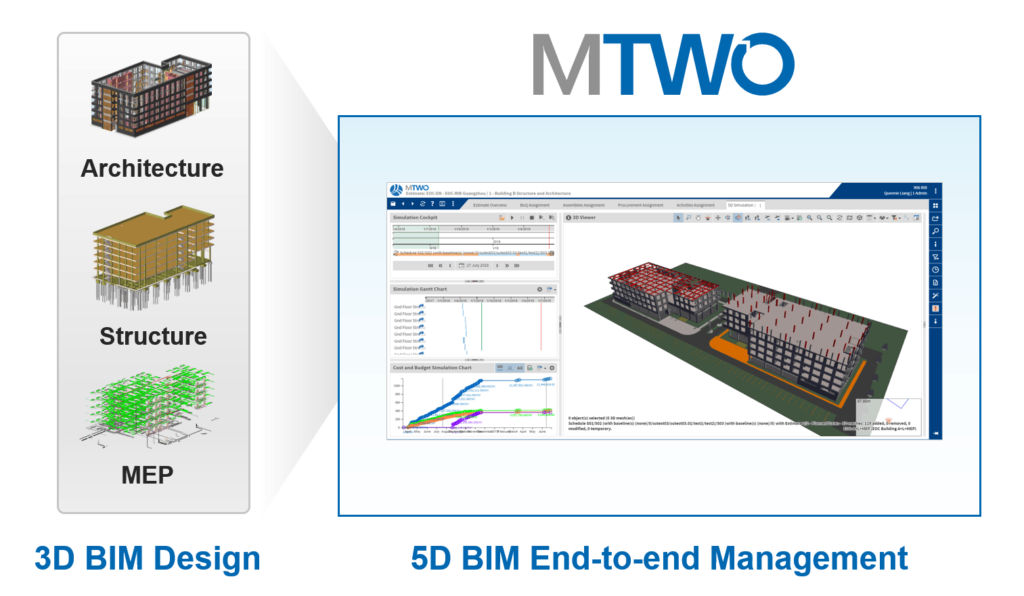
Teams can import architecture, MEP, and structure models from Revit into MTWO so they can be used for cross-platform model integration, collision detection and model quality improvement. The quality-assured models are the basis for subsequent 5D BIM simulation, model-oriented operation, and other downstream workflows.
This is what 5D BIM does for your projects
- BIM-based QTO
With MTWO, quantity surveyors can easily generate automated quantities from 3D models using the predefined rules in the Construction System. The calculations can be displayed in BIM models, simplifying decision-making.
- BIM-based estimating
MTWO combines 3D models and data from previous projects to rapidly create thorough and precise project estimates. Estimates are interconnected with models, BoQ, scheduling and procurement, further enhancing collaboration and data sharing in real-time.
- BIM-based scheduling
5D simulation helps schedulers to identify potential conflicts and detect construction risks early in the planning stage, creating reliable schedules to avoid costly mistakes in the constriction phase.
- BIM-based procurement
The Bill of Materials taken out from the virtual construction is directly transferred into purchase orders. Suppliers’ contract execution performance in MTWO’s vendor library can be easily compared to make prudent purchases. Procurement schedules are integrated with the project timeline to facilitate just-in-time delivery of building items.
- BIM-based facility management
The entire lifecycle of the building or object is presented in BIM 5D in the preconstruction phase, forming the basis for efficient facility management.
One single source of truth throughout the project lifecycle with dashboard views
Efficient project management relies on a common data environment. A complex project has too much information for executives and project managers to assess. Powered by one single source of truth, MTWO supports real-time enterprise-wide collaboration with data that can be trusted. The information is stored in a single database that is readily accessible to project participants. The MTWO Control Tower aggregates information from the data hub to create real-time dashboards that update continuously and expose project performance across multiple factors and disciplines, revealing interdependencies that are difficult to identify and by making predictions concerning the project’s progress.
Powerful ERP integration
MTWO is a highly scalable and open platform that allows easy integration with other technologies for the construction industry to extend platform capabilities. For instance, MTWO provides seamless integration with the mainstream design and ERP software in the industry to manage your finances, supply chain, and stock.
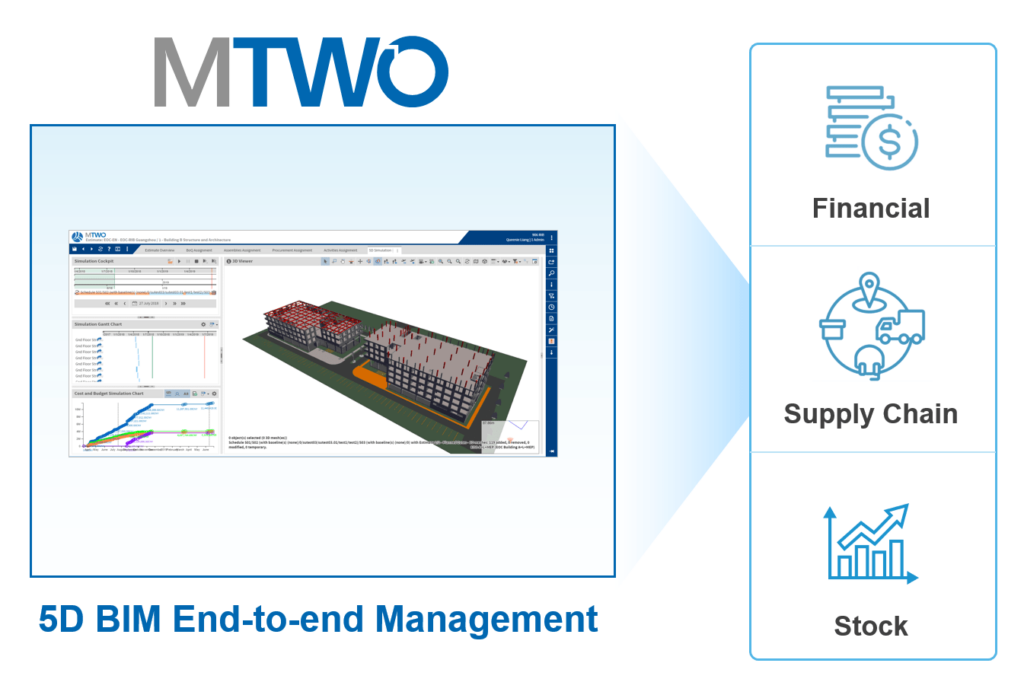
5D BIM simulations help stakeholders understand how the value of the project might be realized and enable them to make better-informed decisions. It also provides valuable information for downstream construction and operations. Quality interactions among stakeholders enabled by 5D simulations help identify and solve problems faster and more effectively. Project teams can frame problems more efficiently, ascertain possible solutions quicker, make predictions more accurately, and ultimately, make better decisions. A study by Mckinsey found that 75 percent of those that adopted BIM reported a positive return on their investment. They also reported shorter project life cycles and savings on paperwork and material costs.
You need MTWO 5D BIM if…
- Your client requires model-based processes (BIM);
- You want to work in a model-based way (BIM) with your partners;
- You want to create added value in compliance with costs and quality for your client;
- You have to optimize conventional planning for further execution;
- You are responsible for the project and cost management of a larger-scale project.
Interested in BIM 5D as a new working method? RIB has developed the MTWO 5D Lab. Here, you can simulate contracts and projects in real time using realistic project data. We will support your learning, from scratch, on the basis of many successfully executed projects. Learn more here.
At MTWO Construction Cloud, we are committed to keeping your teams, data, and processes connected. Learn more about how MTWO can help with your enterprise projects today! Download the Future-Proof Your Construction Business whitepaper below or sign up for a live demo with our product experts and see how MTWO can help your team build better, faster, and smarter.
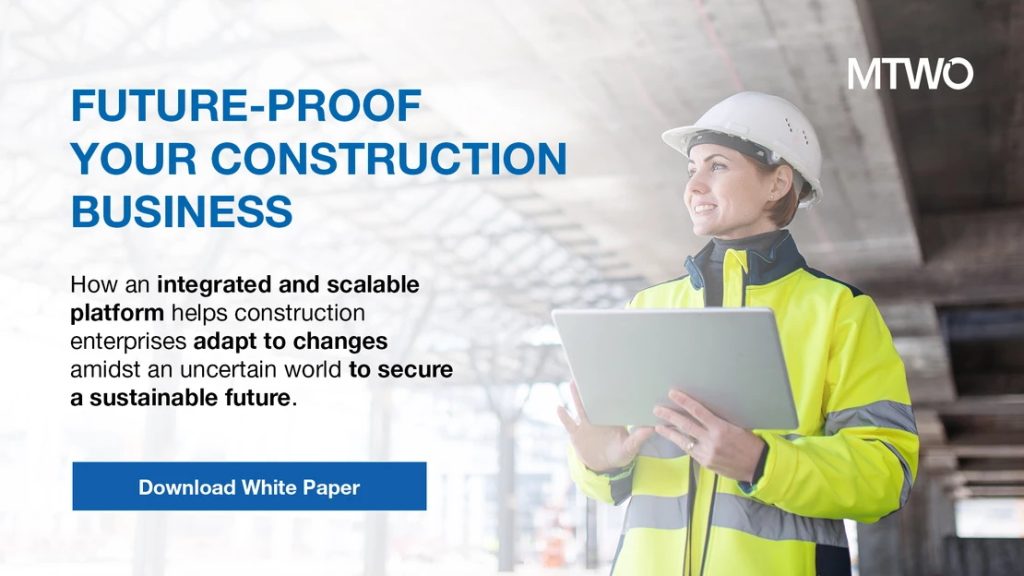
Most Recent
24 mins read
14 mins read
15 mins read
25 mins read
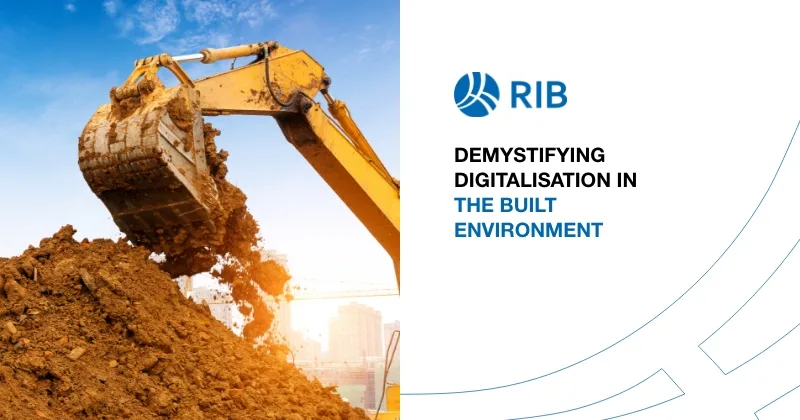
E-BOOK










